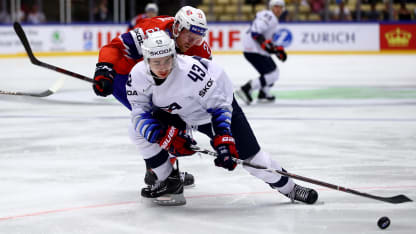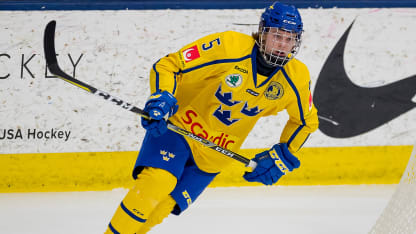The rule changes imposed by the NHL in July 2005 reduced the scope of defensive schemes teams could employ, allowing skilled players more room to operate and increasing the number of quality scoring chances in a game.
"Rule changes are usually geared to letting skilled players be skilled players," said Karl Stewart of NHL Central Scouting. "It helps the smaller defensemen, and many of the skilled guys under 6 feet tall. Maybe five years ago, those players might not have gotten the respect. But you're starting to see these smaller guys contribute in all three zones. Smaller defensemen have to be respected a little more now."
In the 2017 NHL Draft, four of the nine defensemen selected in the first round were less than 6 feet tall, including Cale Makar (5-11, Colorado Avalanche, No. 4), Erik Brannstrom (5-9, Vegas Golden Knights, No. 15), Timothy Liljegren (5-11, Toronto Maple Leafs, No. 17) and Henri Jokiharju (5-11, Chicago Blackhawks, No. 29).
"All teams would like the player to be 6-foot-4, ideally, but if he's not, he's not," said John Williams of NHL Central Scouting. "It's more about getting players who can skate, move the puck, and think the game quickly to transition up ice."
Before Williams became a full-time evaluator for NHL Central Scouting in 2014, he was assistant director of scouting for the Columbus Blue Jackets for five seasons. His extensive scouting background spans 29 years, beginning with Sault Ste. Marie for nine seasons.
"It's a puck-friendly game now and you have to be able to move," Williams said. "You need to be able to do those kinds of things to play and credit to the teams who have recognized the fact that, all things being equal, that skill, skating, and ability to think the game quickly is the most important thing."
Hughes is No. 6 on NHL Central Scouting's final list of North American skaters for the 2018 draft. He's the highest-ranked North American defenseman less than 6 feet tall, and might be the most dynamic of the group.
"Any time you make a jump in your game to college, playing with guys who are mature, making that adjustment is not easy for anyone no matter what your skill set is," said David Gregory of NHL Central Scouting. "The great thing we've seen with Quinn is that his game has progressed as he became accustomed to the pace.
"He can play at any pace, no question about that, but he started to understand how to be more effective and wasn't making the mistakes he made earlier in the year and started to realize how he could dictate this game."
Hughes ranked third in scoring for Michigan with 29 points (five goals, 24 assists) and had a plus-14 rating and 35 blocked shots in 37 games.
Playing fast and smart in transition has become more important than ever in today's NHL.
"You look at Samuel Girard (Colorado Avalanche) and Victor Mete (Montreal Canadiens), who each played as 19-year-olds this season; the proof is there," said Troy Dumville of NHL Central Scouting. "In the end, there's probably going to be three or four defensemen chosen who are under 6-foot. Girard (5-10, 162) and Mete (5-9, 184) are proving that they can play and play right away, so we're seeing that the game has changed so much that players that size can step right in. I think it's a positive thing. Skills are becoming more important, the game is getting faster, and that's not a bad thing."



















